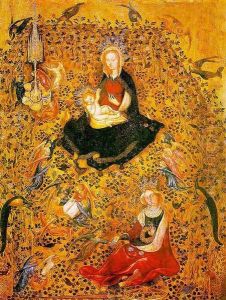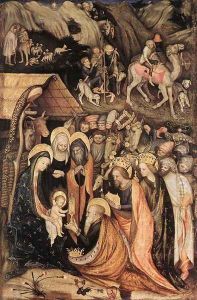Stefano Da Zevio Paintings
Stefano da Zevio, an Italian painter, was born in 1379 in Zevio, a small town near Verona, in the Veneto region of Italy. His exact death date is uncertain, but historical records suggest he was active until approximately 1451. Stefano da Zevio was a significant figure in the transition from the Gothic style to the early Renaissance in Northern Italy. His work reflects the influence of the International Gothic style, characterized by elegant and graceful figures, rich colors, and detailed backgrounds, but also shows an awareness of the emerging Renaissance emphasis on perspective and volume.
Stefano's artistic career was primarily based in Verona, where he became one of the leading painters of his time. He was profoundly influenced by Altichiero da Zevio, another prominent Veronese painter from whom he might have learned his craft, though there is no evidence to suggest they were related despite the similarity in their names. Stefano's body of work includes religious frescoes, altarpieces, and private devotional paintings, which were highly praised for their narrative clarity, emotional depth, and decorative beauty.
Among his most famous works are the frescoes in the church of San Zeno in Verona, which depict scenes from the Old and New Testaments. These frescoes are celebrated for their vivid storytelling and the skillful use of color, which brings the biblical stories to life with remarkable intensity. Stefano da Zevio's contribution to the art of fresco painting in the early Renaissance was significant, and his works played a crucial role in the development of Veronese painting.
Despite his importance in the early Renaissance period, Stefano da Zevio's life and works have not been as thoroughly documented as those of his contemporaries, such as Pisanello or Gentile da Fabriano, which has led to a certain degree of obscurity. Nevertheless, his surviving works continue to be studied and admired for their beauty and historical value, offering insight into the artistic transitions of the period.

